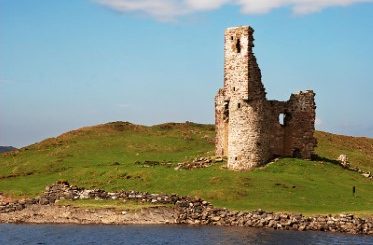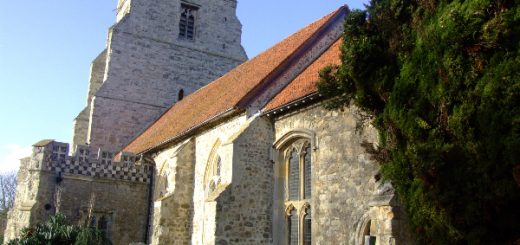Black Knight of Manoel Island
Once the property of the Bishop of Malta and known as l’Isola del Vescovo, Manoel Island took its present name name from António Manoel de Vilhena (Born 28 May 1663 – Died 10 December 1736), the 66th Grand Master of the Sovereign Military Hospitaller Order of Saint John of Jerusalem of Rhodes and of Malta, who commissioned a fort to be built here in 1726 and according to some, may have haunted the island early in the 20th century.
 During the plague of 1592 – 1593 a small hospital or lazaretto (a quarantine station for maritime travellers ) was in operation on Manoel Island. A permanent lazaretto was built by the Knights of Malta in 1643 after Manoel Island was acquired by Grandmaster Giovanni Paolo Lascaris (Born 28 June 1560 – Died 14 August 1657) from Bishop Miguel Juan Balaguer Camarasa. Therefore the 30 hectares Manoel Island was used to safeguard against diseases such as the plague and cholera coming to Malta aboard ships and infecting the population.
During the plague of 1592 – 1593 a small hospital or lazaretto (a quarantine station for maritime travellers ) was in operation on Manoel Island. A permanent lazaretto was built by the Knights of Malta in 1643 after Manoel Island was acquired by Grandmaster Giovanni Paolo Lascaris (Born 28 June 1560 – Died 14 August 1657) from Bishop Miguel Juan Balaguer Camarasa. Therefore the 30 hectares Manoel Island was used to safeguard against diseases such as the plague and cholera coming to Malta aboard ships and infecting the population.
The island and the lazaretto continued to be used for quarantine after the British started to govern Malta in 1800. Sir Walter Scott and his family were quarantined in apartments within Vilhena’s Fort Manoel rather than the lazaretto when they visited Malta.
With the reduction in the need for an isolation hospital on Manoel Island, the British Admiralty took over the lazaretto in 1939. During the the Second World War it was used a submarine depot and suffered damage from German bombing during 1942. Between 1949 and 1970, the lazaretto was once again a hospital, though it was then abandoned and there followed thirty years of vandalism and neglect.
A similar fate befell Fort Manoel. In 1906 its guns were decommissioned, but during World War II it mounted an anti aircraft battery and suffered serious damage during the bombing which destroyed the fort’s chapel. Again it was then abandoned left to ruin.
Today the island is reached by a small bridge and boasts a yacht repair facility. Millions of euros have been spent restoring the fort, which included the rebuilding of the its chapel dedicated to St Anthony of Padova. The fort was opened to the public on 31 October 2009 and is now the home of the Royal Malta Yacht Club. There are also plans to restore the Lazaretto.
Ghost?
The following account is taken from an article entitled ‘Malta’s Most Haunted‘ published in the Times of Malta on 16 March 2009, ‘The apparition of the Black Knight, who seemed to spring out of nowhere, occurred during the years immediately following World War II, and was spotted by both Maltese and Englishmen working near a heap of rubble as part of the restoration of the island. Fort Manoel was a man-of-war and part of the reconstruction work being carried there at the time was to give back some sense of décor to the chapel.
Dressed in full armour and regalia of the Order of St John, the knight would be seen supervising the men’s work and his apparitions became more frequent once work there became more regular. The workmen also noticed the similarity between the Black Knight and a portrait of Grand Master Manoel de Vilhena himself by Favray* which still hangs in the President’s Palace in Valletta.
When a crypt beneath the chapel** was opened with the permission of the Archbishop, Captain Brockman, who was leading the work, found it had been destroyed by vandals. The altar and the reliefs bearing the crucifix and the souls in purgatory were all wrecked.
When the crypt was restored and masses were said, the knight stopped appearing. However, he came back. When investigations were once again carried out it was discovered that the crypt had been abandoned, only to be vandalised again. This was in 1980.
Notes:
*Antoine de Favray (Born 8 September 1706, Paris – Died 9 February 1798, Malta).
**It is thought the first person to be buried in the crypt of the chapel was the French military engineer Charles-François de Mondion (Born 1681– Died 1733) who was responsible for some of the fort’s design. Some of those who died at the Lazaretto were also buried here.




Recent Comments